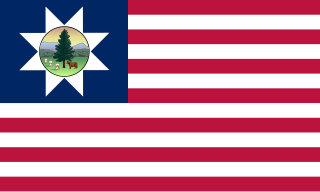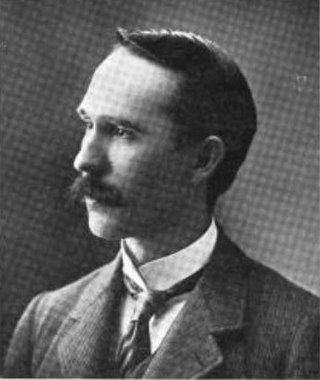
Rutland County is a county located in the U.S. state of Vermont. As of the 2020 census, the population was 60,572, making it the second-most populous county in Vermont. Its county seat and most populous municipality is the city of Rutland.

Vermont Technical College is a public technical college in Vermont with its main campuses in Randolph Center, Williston and Norwich. In addition, there are regional campuses in Brattleboro and Bennington, and nursing campuses in six locations throughout the state.

Castleton University is a public university in Castleton, Vermont. It has an enrollment of 2000 students and offers more than 30 undergraduate programs, as well as master's degrees in education and accounting. It is accredited by the New England Commission of Higher Education.
Ida May Fuller was a Vermont schoolteacher and legal secretary. She was most notable as the first beneficiary of recurring monthly Social Security payments.

Solomon Foot was an American politician and attorney. He held numerous offices during his career, including Speaker of the Vermont House of Representatives, State's Attorney for Rutland County, member of the United States House of Representatives, and United States Senator.

Ernest William Gibson Jr. was an American attorney, politician, and judge. He served briefly as an appointed United States Senator, as the 67th governor of Vermont, and as a federal judge.

The 1st Vermont Infantry Regiment was a three months' infantry regiment in the Union Army during the American Civil War. It served in the eastern theater, in and around Fortress Monroe, Virginia.

The 14th Vermont Infantry Regiment was a nine months' infantry regiment in the Union Army during the American Civil War. It served in the eastern theater, predominantly in the Defenses of Washington, from October 1862 to August 1863. It was a member of the 2nd Vermont Brigade.

Peter Thacher Washburn was a Vermont lawyer, politician and soldier. A veteran of the American Civil War, he served as the 31st governor of Vermont as a Republican from 1869 to 1870, and was the first Vermont Governor to die in office.

Fair Haven was an Amtrak intercity train station in Fair Haven, Vermont. It opened in November 1997, and was closed and replaced by nearby Castleton station in January 2010.

U.S. Route 4 (US 4) in the U.S. state of Vermont extends for 66.059 miles (106.312 km) between the New York state line at Fair Haven and the New Hampshire state line at White River Junction. It is one of the main arteries between New York and New Hampshire.
Samuel Read Hall was an American educator.

Hoyt Henry Wheeler was an associate justice of the Vermont Supreme Court and later a United States district judge of the United States District Court for the District of Vermont.

Castleton station is an Amtrak intercity train station in Castleton, Vermont. Originally built by the Rutland and Whitehall Railroad in 1850, the depot is now privately owned, and is located across from the northern terminus of the Delaware and Hudson Rail Trail. Castleton replaced Fair Haven station on the Ethan Allen Express in January 2010. It serves nearby Castleton University and Lake Bomoseen.
John Ingersoll Gilbert was an American politician from New York.

John H. Watson was a Vermont attorney and judge. He served as an associate justice of the Vermont Supreme Court from 1899 to 1917, and chief justice from 1917 to 1929.
Joseph F. Radigan was an American attorney and politician from Vermont. A Democrat, He is most notable for serving as United States Attorney for the District of Vermont from 1961 to 1969.

Arthur P. Carpenter was an attorney and government official from Vermont. A Democrat, among the offices in which he served was United States Marshal for the District of Vermont (1914-1922) and judge of the Brattleboro, Vermont municipal court (1923-1929).

John E. Woodward was a career officer in the United States Army. A veteran of the Spanish–American War, Philippine–American War, Moro Rebellion, Pancho Villa Expedition, and World War I, he served from 1892 to 1934 and attained the rank of brigadier general. Woodward was most notable for his command of the 113th Infantry Regiment, Camp Upton, 152d Depot Brigade, 24th Infantry Brigade, 151st Depot Brigade, and 12th Division.

Michael S. Pieciak is an American politician from Vermont. A member of the Democratic Party, Pieciak has served as Vermont State Treasurer since January 2023.















